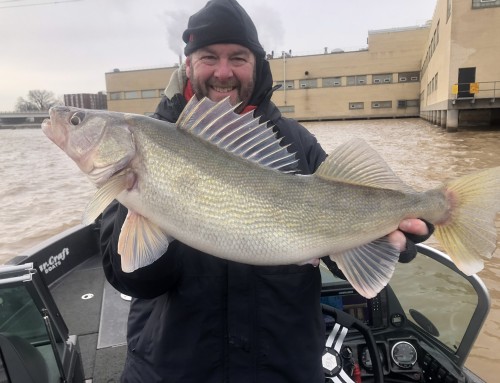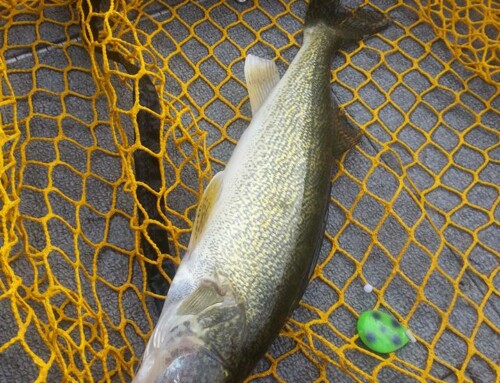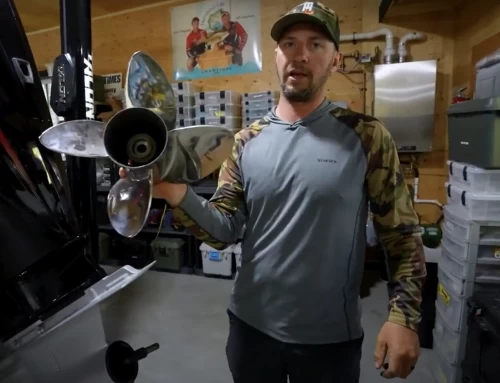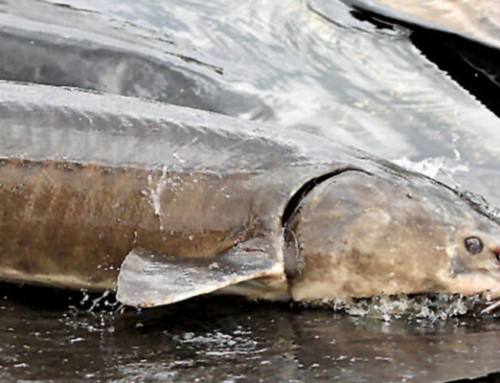Oshkosh — The Calumet made her way at 1 mile per hour over the surface of Lake Winnebago, a prudent speed given the circumstances.
“I think we’re going to have to drop some on the floor,” said Ryan Koenigs, a Wisconsin Department of Natural Resources fisheries biologist standing near the stern of the 53-foot trawler. “They won’t all fit on the table.”
The trawler’s net was full, very full, mostly of freshwater drum but also with an assortment of common carp, walleye, sauger, lake sturgeon and many smaller, but no less important, species.
In fact, one of the primary reasons for the work — the DNR’s annual Lake Winnebago trawling assessment — is to measure the lake’s forage base.
Ryan Zernzach, a DNR fisheries technician who doubles as captain of the Calumet, engaged a hydraulic lift and elevated part of the heavily-laden net. A tether at the base of the net was loosened and fish began sliding onto the boat’s floor.
“It’s about as many as I’ve ever seen in one pull,” said Bob Marin, a seasonal DNR fisheries employee in his 21st year of Winnebago trawls.
After the net was partially unloaded, Zernzach used the controls to lift and reel the net a few more feet and hundreds more fish spilled onto a steel table.
With that, the crew — which also included DNR fisheries biologist Adam Nickel, fisheries technicians Andrew Notbohm and Jake Richter and volunteer Tom Mader of Oshkosh — began counting and sorting.
Game fish were pulled out of the pile and placed in water-filled tubs. Adult drum (also known as sheepshead) were counted and placed on a conveyor belt. The fish accumulated in a pile on the foredeck. At day’s end, the fish would be donated to a mink rancher.
With workmanlike efficiency, the huge load was processed in just minutes. The men barked out data; Nickel recorded every number.
Koenigs and Marin measured each game fish and quickly returned them to the lake. The catch included more than a dozen walleye from 5 to 16 inches in length, a channel catfish and three saugers.
Nothbohm, Richter and Mader sorted forage fish and young panfish on the steel table.
After all the fish had been recorded and the boat cleaned, it was on to the next transect.
Nickel added the numbers. The trawl, in the northeast corner of the lake, produced the biggest catch of the year, including 2,231 adult sheepshead.
“Drum dominate the biomass out here,” Nickel said. “They’re an important part of the system, for sure. But this (assessment) provides us with a look at much more than drum.”
At 137,708 acres, Winnebago is Wisconsin’s largest lake. It’s also very shallow for its size, with a maximum depth of about 21 feet.
Winnebago has the state’s largest walleye fishery, according to DNR reports, and is one of the world’s last remaining strongholds for lake sturgeon. The sturgeon population is robust enough to support an annual spearing season in winter. The system also features populations of white bass, largemouth bass, smallmouth bass, yellow perch, bluegill and sauger, to name some of the most desirable sport fish.
A University of Wisconsin-Extension study in 2006 estimated the Winnebago fishery has a $234 million annual economic impact on local communities and supports 4,300 jobs in the region. Given its size, diversity and productivity, the Winnebago system is arguably the most valuable fisheries resource in the state.
Clubs, organizations and individuals in communities around the lake have strongly supported the DNR in its fisheries management efforts. The Calumet, for example, was purchased with private funds and donated to the DNR, as were several shocking boats. Local clubs also put in rock spawning reefs and have raised saugers for stocking.
The annual Lake Winnebago trawling assessment is conducted on 46 index sites in August, September and October. The work provides a good indication of the year’s hatch of fish in the system.
The Winnebago trawling assessment has been conducted annually since 1986, making it one of the longest-running such tests in the state. The project is an example of science-based natural resources management in action.
The transects are sampled with a 25-foot-wide trawling net pulled across the bottom at 4 miles per hour for five minutes. The result is a sample of 1 acre of bottom, Nickel said. Most of the adult game fish easily swim away from the net.
The trawling study showed 2014 to be a poor year for fish production in Lake Winnebago. The results so far show 2015 to be slightly better, but not great.
Trout perch, an important and typically abundant forage fish in the lake, is showing the third lowest levels of young-of-the-year fish in the last 17 years. Similarly, YOY drum and gizzard shad are near the low end of their production ranges.
Yellow perch, black crappie and white bass, too, are not showing a “banner year.”
And among the marquee fish, the survey is finding 1.7 YOY walleye per trawl this year, up from 0.4 in 2014 but down from the excellent year class of 2013 (11.9 per trawl).
With reduced production of forage fish the last two years, walleye in Winnebago are growing more slowly than in the recent past. Several 11-inch walleye caught on the trawl were likely from the 2013 year class, according to the biologists, and in times of richer forage would be about 15 inches. The low forage base can benefit anglers, however, as hungry predator fish strike more aggressively at lures.
Survival of hatched fish depends on many factors, including water temperature, water levels and availability of zooplankton, Nickel said.
Despite the drop in production the last two years, Nickel said the Winnebago system is in good shape. He doesn’t recommend any regulation changes at this time.
“You can’t have a huge year class every year,” Nickel said. “And we have some banner year classes of walleyes in the system now. It would be good to have some nice classes of forage fish soon, though. We’ll keep a close eye on it.”
Article courtesy of WI DNR, Originally appeared in the Milwaukee Journal Sentinel, by Paul Smith





